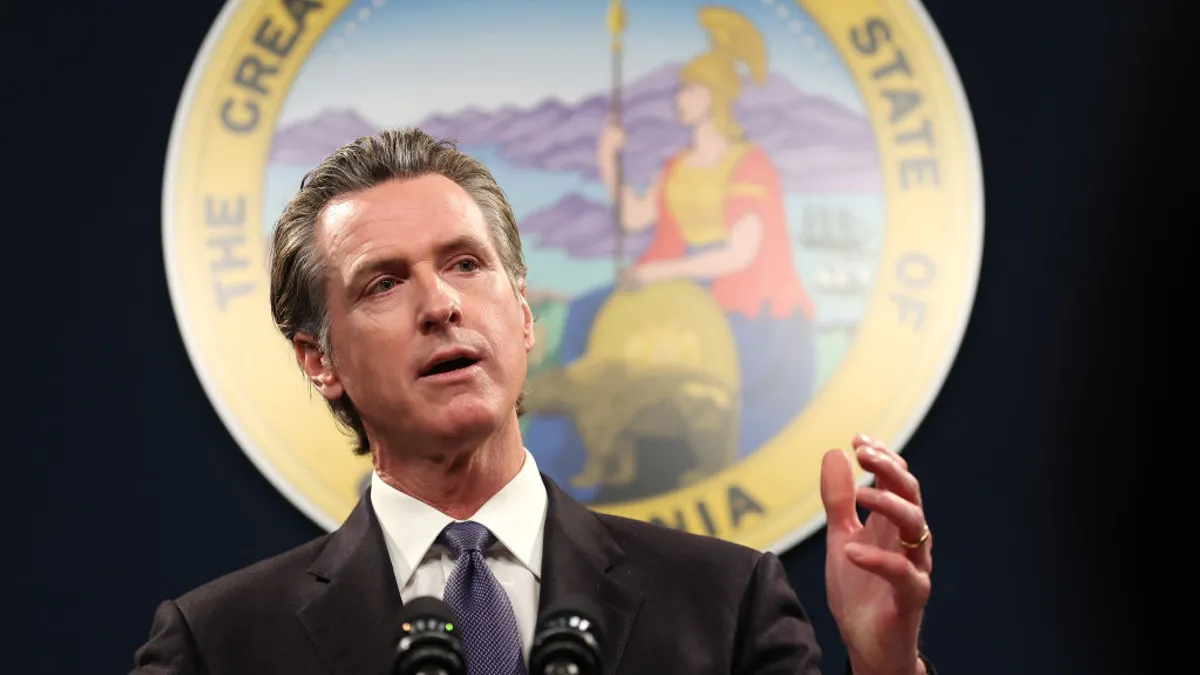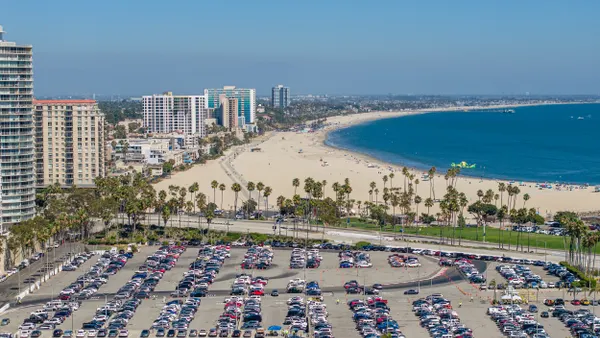Dive Brief:
- California Gov. Gavin Newsom, D, on Saturday announced he signed SB 410, aimed at speeding customer interconnections to the utility grid and helping the state to electrify buildings and vehicles. “It is imperative that we accurately plan, prepare, and prioritize the connection and energization of customers,” he wrote in a signing statement.
- Distribution system improvements can take six months to a year in some areas of the state and are slowing customer adoption of clean energy appliances, according to bill sponsor Sen. Josh Becker, D.
- SB 410 was among a slate of clean energy bills Newsom signed over the weekend. Others included measures to improve efficiency in large buildings, allow the state to buy clean energy, speed offshore wind development and build out clean energy transportation.
Dive Insight:
SB 410, known as the Powering Up Californians Act, directs the California Public Utilities Commission to set average and target time periods for grid connections and upgrades. It is supported by several clean energy groups while Pacific Gas & Electric has expressed concern about the balance between speed and safety when it comes to grid upgrades
SB 410 is a key initiative to speed adoption of electric vehicles, according to the Environmental Defense Fund.
“Delays in connecting new electric vehicle chargers to the grid jeopardize the ease of access required to propel the transition away from fossil fuels,” Katelyn Roedner Sutter, EDF’s California state director, said in a statement. “These new requirements on utilities to develop the infrastructure to support this change and the accompanying growth in energy demand will prove vital.”
The law directs the CPUC to set “reasonable average and maximum target energization time periods” by Sept. 30, 2024. Regulators will also set utility reporting requirements “so that electrical corporation performance can be tracked and improved.”
The reporting, which will be required at least annually, will include data on the average, median, and standard deviation times for interconnection requests that exceed target maximum timelines. The bill also requires the CPUC to ensure that utilities “have sufficient and timely recovery of costs,” and allows for the commission to utilize a balancing mechanism for energization costs that exceed authorized rates.
“I am signing this bill because many of its provisions address this acute and critical issue with accountability metrics and a new, one-time revenue stream, with sensible customer protections,” Newsom wrote.
Advanced Energy United said interconnection delays are “a major obstacle” to customer adoption of clean energy technologies. SB 410 “helps break through the logjam,” said Emilie Olson, a senior principal who manages Advanced Energy United’s legislative engagements in California and Colorado.
“The bill enables faster interconnection timelines and increased transparency for utilities so they can make evaluations more quickly and speed up wired connections from homes and businesses to the grid,” Olson said after the bill passed the state’s legislature in September.
Pacific Gas & Electric is the state’s largest utility and has faced scrutiny over interconnection delays. The utility previously expressed concerns about the legislation but in an emailed statement said the new law "rightfully addresses the urgent need to fund the capacity and energization work necessary to power the state’s electrification goals."
"SB 410 will bring certainty about our ability to serve our customers by setting reasonable average and maximum time periods for energizing customers, and by establishing a framework for utilities to report compliance with those time periods," the utility said
SB 410 was among a slate of clean energy bills Newsom signed this legislative session. Among others, AB 1373 creates a central procurement process for California to acquire clean energy, SB 48 aims to help improve efficiency in large commercial buildings, and SB 49 allows highway rights-of-way to be utilized for solar, storage and transmission. AB 3, the Offshore Wind and Jobs Act, aims to speed offshore renewable development by upgrading California’s ports.
“As one of the biggest economies in the world, what we do here matters beyond our borders,” Laura Deehan, Environment California’s state director, said in a statement about the signings. “With today’s action, Gov. Newsom cements California’s climate leadership.”
Update: This story has been updated to include comment from Pacific Gas & Electric.












